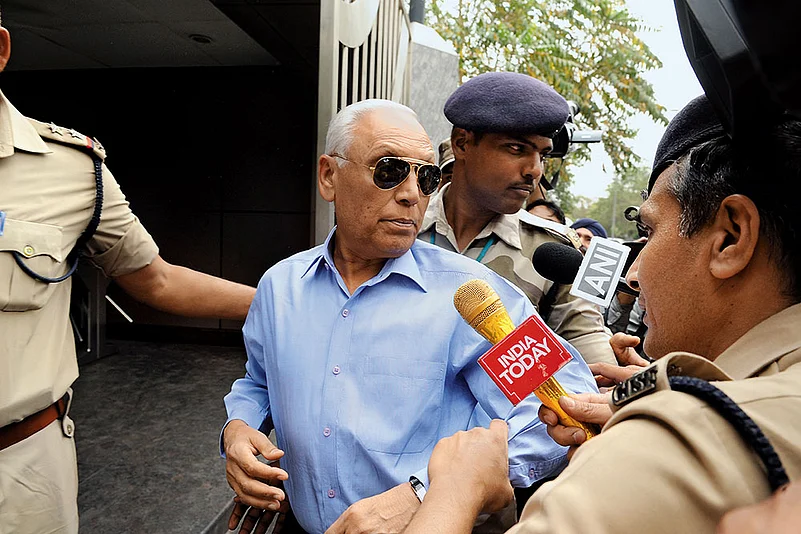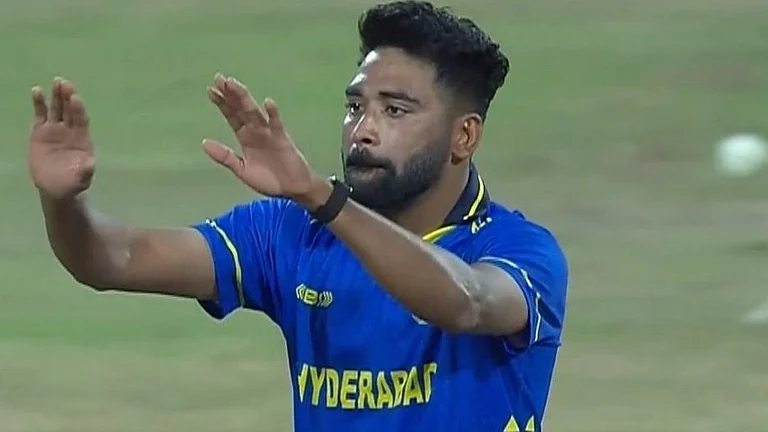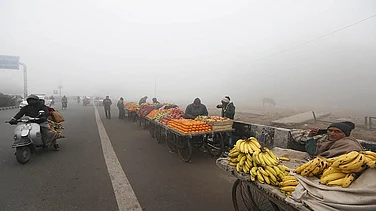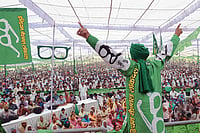The Tyagi brothers—Sanjeev ‘Julie’ Tyagi and his elder brother Rajiv Tyagi, known as Docsa—are seated in the lobby of their Sainik Farms residence where the three brothers (Sandeep Tyagi is not here at the moment) live together in two cottages in the compound. A number of cars are parked on the driveway that extends along the periphery of the property, including a white S-Class Mercedes Benz. The house is tastefully done and the brothers display the mannerisms of a typical middle-elite family from Uttar Pradesh.
Clearly, business has been good.
For the past 30 years, the Tyagis have been identifying and liaising with international joint venture partners for Indian private sector undertakings in the infrastructure sector, particularly power projects. It was this line of business that brought them in contact with Finmeccanica, as consultants primarily in the power sector. The association dates back to 1995, with Ansaldo—a Finmeccanica company—for which they received payments. “That was way before the AgustaWestland deal was brokered,” clarify the Tyagi brothers with supporting documents.
They are visibly under tremendous pressure from investigating agencies and a relentless media focus that has painted them as the main recipients of the $8.5 million (Rs 56.7 crore) that an Italian court says was paid as bribes to Indian officials and agents to swing the deal in Agusta’s favour. With the case having taken a heavily political turn, they say wait and watch is the only option. “We are going to cooperate in every possible way with the investigating agencies like we have done in the past. It would be in our interest if the investigation is taken to a logical conclusion,” says Julie.
The constant media glare and long gruelling sessions with the CBI and the ED have taken their toll. Retired Air Chief Marshal S.P. Tyagi, son of their mother’s brother, is equally stressed out—for pretty much the same reasons. A few tangential details do seem a trifle curious. Some of those who have been interrogated say their day in the CBI or ED office is a sham—barring some desultory questions that they are asked, the hours are mostly spent having coffee or tea and strolling up and down the corridors. At 5 pm, they are told to leave but an alert is sent out to the waiting press posse so that the TV images that evening are of harried, wanted men who have been grilled relentlessly, which is also suggested in the unofficial press briefing by the government agencies.
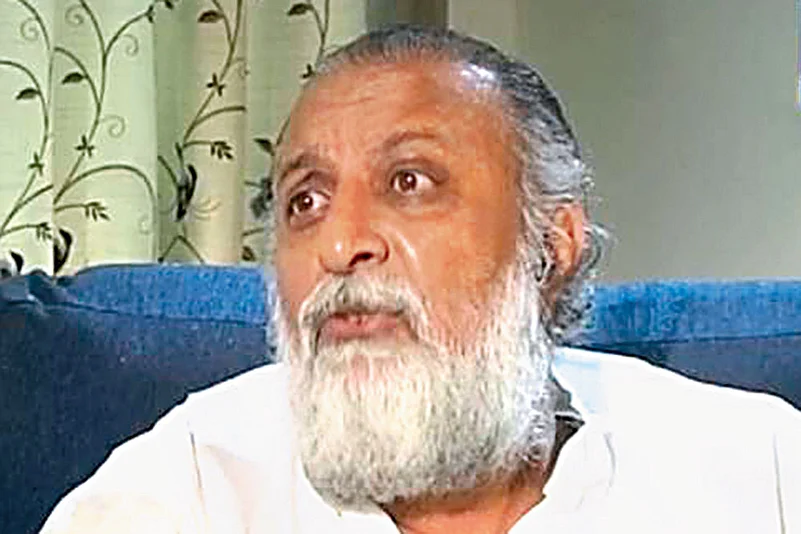
Rajiv Tyagi
According to the FIR filed by the CBI, the Tyagi brothers received a total of 3,36,000 euros in two instalments between May 2004 and February 2005, and also some cash. “Save these two tranches of big money, [they] never received such a big amount at any time as a consultancy fee,” the document says. This is not true. The Tyagi brothers have been paid consultancy fee from Finmeccanica companies since 1996, mostly for deals in the power sector.
Another contradiction they point out on the basis of documents with the CBI is that the last payment they received from the group was in February 2005, while the AgustaWestland deal was executed five years later in 2010.
So why have they been made the face of this scandal? The connection is the Milan Court of Appeals, which is looking into the issue of bribes paid for the helicopter deal with India. The court had observed that there were “unmistakable indications regarding corruption of an Indian officer” to whom payments were made in cash and through wire transfers. Indian agencies say this refers to S.P. Tyagi, who was chief of the Indian Air Force from 2005 to 2007. While his involvement—and indeed anyone’s involvement—is still to be proved except through innuendo and some diary notations by a top official of the Italian conglomerate who was jailed for bribery, the case so far raises a number of questions.
SLOW-GRINDING WHEEL
Where is the probe headed?
The CBI has been probing the Agusta deal for the past three years, two under the Modi government. Judging by the experience of the Tyagis, there is little clarity on where the investigation is heading—except that the ‘caged parrot’ is behaving even more blatantly than before as a political tool. The questions they ask the Tyagis are all geared towards implicating politicians in the UPA, more specifically, Sonia Gandhi or her aide Ahmed Patel. The investigators have made little progress so far, other than questioning the same small group of people again and again.
ON AND OFF THE RECORD
The CBI FIR and beyond
According to the FIR, Guido Haschke and Carlo Gerosa, in collusion with the Tyagi brothers, managed to make inroads into the IAF through S.P. Tyagi and “thereby could subvert the consistent stand by the IAF on the issue of service ceiling of the helicopter”. The documents, however, don’t support this claim.
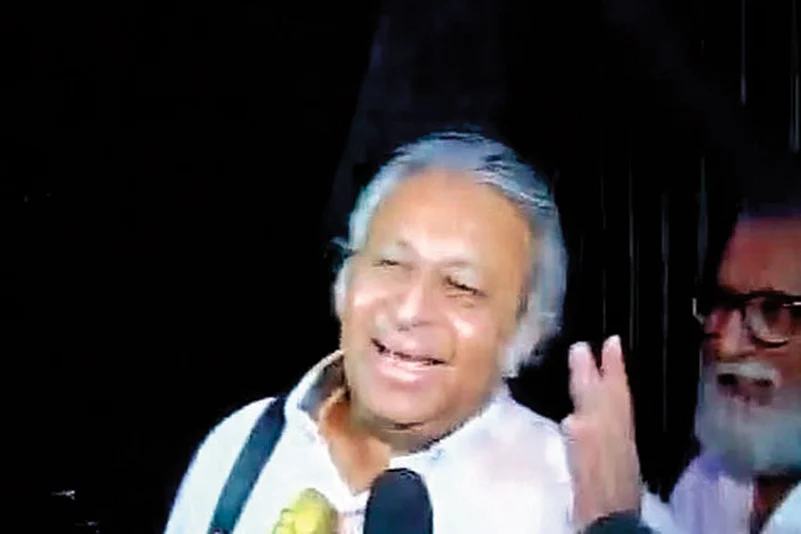
Sanjeev Tyagi Says The Family Is Being Hounded
The man who knows the most about the deal is, coincidentally, none other than the Comptroller and Auditor General of India (CAG), Shashi Kant Sharma. He has been witness to the entire process from the outset, first as joint secretary (air) and then head of acquisitions in the defence ministry, and eventually as defence secretary. The CAG report, prepared under him and tabled in Parliament in August 2013, states that Air Headquarters selected the Eurocopter EC 225 in 2003 after conducting proper flight evaluation.
Six months later, in June 2003, the defence ministry under the Atal Behari Vajpayee government asked Air HQ to “reassess the EC 225” at a meeting chaired by Brajesh Mishra, then principal secretary to Vajpayee, which also had officials from the ministry, Air HQ and Special Protection Group that provides security for VVIPs. Going by the CAG report, this is where the PMO asked for a change in selection criteria, which would eventually enable the AgustaWestland deal—“While the mandatory requirement for operational altitude be 4,500 metre, the higher flying ceiling limit of 6,000 metres and a cabin height of 1.8 metres could be made desirable (not essential) or the PMO/SPG could be associated with the framing of parameters from the standpoint of VVIP convenience and security (sic).”
In fact, AgustaWestland helicopters were not even considered for trials, but this intervention by the PMO (and not the air force, as has been hinted) allowed them entry. ED sleuths informally suggest the possible involvement of “a relative of a very influential BJP leader needs to be investigated in this regard”. If the instructions came from the PMO before S.P. Tyagi became the air chief, why would he need to be bribed, as the CBI claims, to subvert “the consistent stand by the IAF on the issue of service ceiling of the helicopter”? The documents clearly prove that it was the Vajpayee PMO that sought this change in the operational requirement.
“Please understand that the chief of air staff is not in a position to decide which aircraft to buy,” S.P. Tyagi told a news channel. Defence minister Manohar Parrikar too, incidentally, has said that the former air chief and Delhi-based lawyer Gautam Khaitan, whose name also figured in the matter, are “small people” who “simply washed their hands in a flowing Ganga”, again hinting that they are not after the Tyagis but bigger fish.
BIDDER WILL BID
Why is AgustaWestland still bidding in defence deals?
AgustaWestland and its parent company, Finmeccanica, were included in Modi’s Make-in-India scheme and allowed to bid for defence deals as overseas partners in July 2014. A month later, the Foreign Investment Promotion Board also gave the final approval to Indian Rotorcraft Limited—a joint venture between AgustaWestland and Tata—to produce upgraded versions of the AW119 reconnaissance and surveillance helicopter in India. AgustaWestland was again allowed to bid for 100 naval utility helicopters in partnership with an Indian firm. Some of these actions were initiated when Arun Jaitley was defence minister. How does this square with the official view that Agusta is a blacklisted company?
EASE OF SCAM
Is Khaitan the key to the scam?
The CBI FIR, reproduced in the ED case information report, accuses Khaitan of being the person who “facilitated the transfer of kickbacks”. According to the ED report, Khaitan was the legal advisor of IDS Infotech, India, and introduced its chairman Satish Bagrodia and MD Partap K. Agrawal to Haschke and Gerosa of AgustaWestland. The firm received 2.166 million euros from AgustaWestland between November 2007 and April 2010 (after S.P. Tyagi retired as air chief).
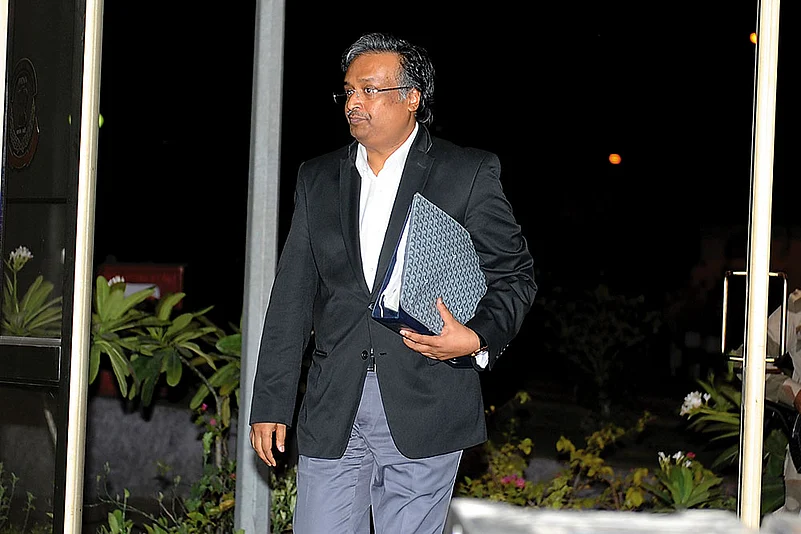
Gautam Khaitan
Subsequently, IDS Tunisia was incorporated as a 100 per cent subsidiary of IDS Infotech, but after a few months, was sold back to Haschke and Gerosa. Another firm, Aeromatrix, was floated with Khaitan, Haschke and Gerosa as directors and the business of IDS Infotech was transferred to this company. As per the ED report, Praveen Bakshi, working CEO of Aeromatrix, admits that his company played an important role in the “channelising of money for illegal gratification...[and Finmeccanica] have brought money through this company by way of fictitious/over invoices”.
The ED probe also revealed that Khaitan holds 17 per cent shares in Aeromatrix. “M/s IDS Tunisia raised a bill amounting to Euro 24.37 million on M/s AgustaWestland,” reads the report. “However, M/s IDS Infotech and M/s Aeromatrix were paid Euro 1.88 and 3.8 million, respectively, for the same work for which a bill of 24.37 million was raised.... This money [the difference, which amounts to 20 million euros] was eventually brought to India through Mauritius route by Shri Gautam Khaitan for payment of illegal gratification.” Though Parrikar’s statements suggest the government has bigger targets in its sights than Khaitan and the Tyagis, the only evidence so far is of money being paid to these “small people”. All indications are that this case is going the Bofors way, where dramatic allegations were made against then prime minister Rajiv Gandhi and others, but no one was ever charged on the basis of solid evidence.
Bofors was a top-class artillery system that lay mothballed until Kargil happened and its capabilities were put on combat display. Three AgustaWestland helicopters, again a top-class aircraft system worth $50 million, lie mothballed at Palam technical area. So far, they are the only victims of the scam.
***
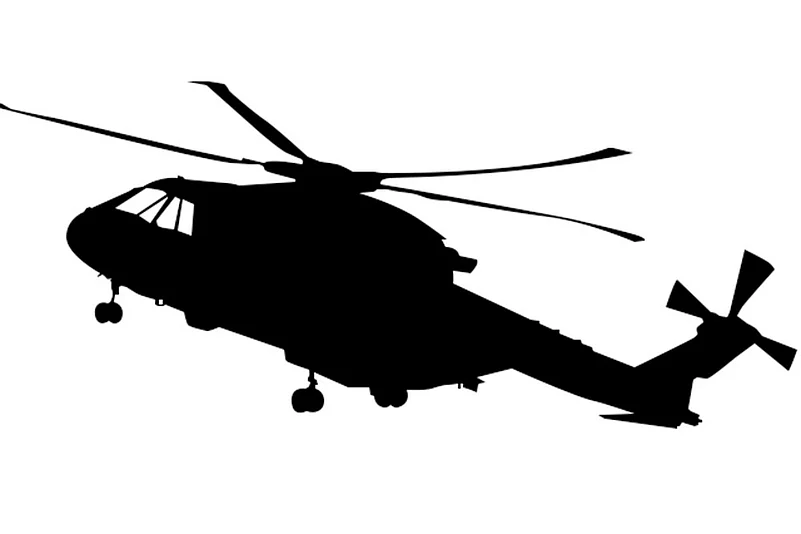
What, When & Wherefore
A chronology of the AgustaWestland scam
- August 1999 IAF proposes replacement of Mi-8 helicopters
- March 2002 Global Request for Proposal (RFP) issued. Four vendors respond.
- November 2003 Meeting at the PMO chaired by Brajesh Mishra decides to reduce operational requirement of altitude to 4,500 metres from the original 6,000 metres
- September 2006 Request for proposal is issued for 12 helicopters to six vendors
- February 2010 Cabinet Committee on Security approves award of the contract to AgustaWestland
- February-July 2012 Reports of unethical dealings surface in Italian media
- February 2013 G. Orsi, CEO of Finmeccanica/AgustaWestland, arrested for financial malpractices. CBI registers a case against six companies.
- February 2013 Showcause notice to AgustaWestland
- January 2014 UPA government terminates contract with AgustaWestland
- May 12, 2014 A ban imposed on Finmeccanica and all group companies
- May 23, 2014 Government of India wins case for encashment of bank guarantee worth 228 million euros in a court in Italy
- July 3, 2014 Government seeks Attorney General Mukul Rohatgi’s opinion on lifting the ban
- July 22, 2014 Finmeccanica allowed to participate as sub-contractor and supplier in all defence contracts
- April 2016 Judgement by the Milan Court of Appeals has a separate 17-page chapter on Tyagi that explains grounds for the conclusion related to corruption of an “Indian public officer”






